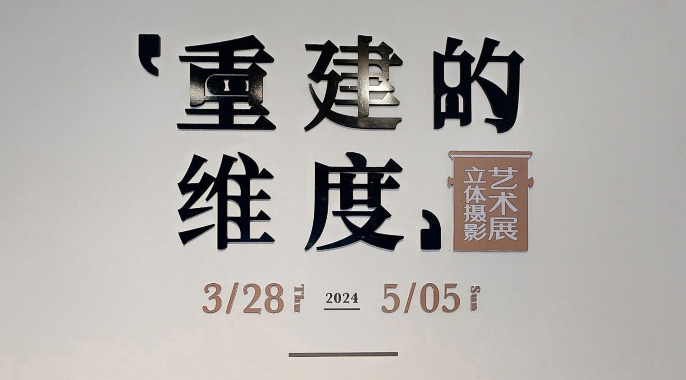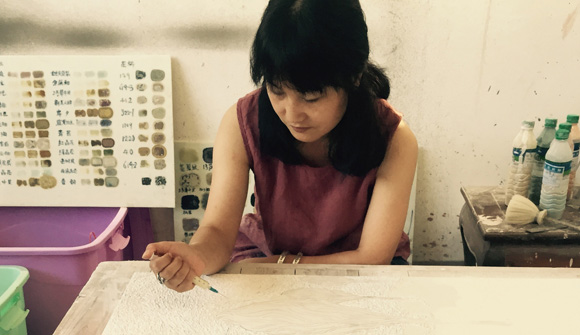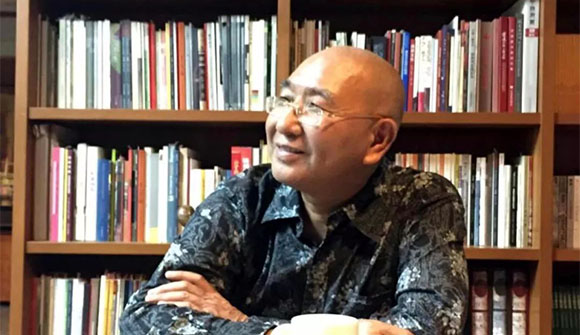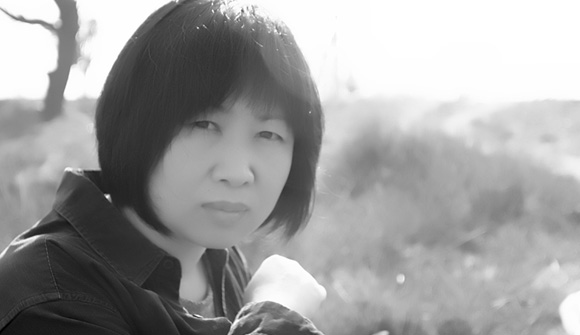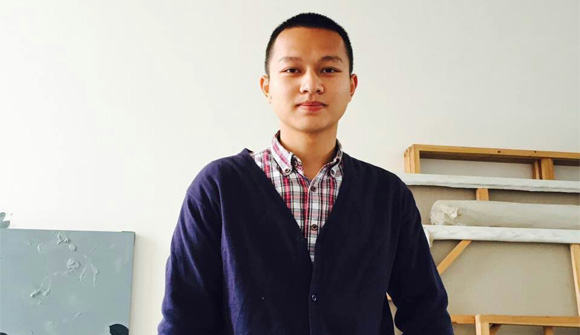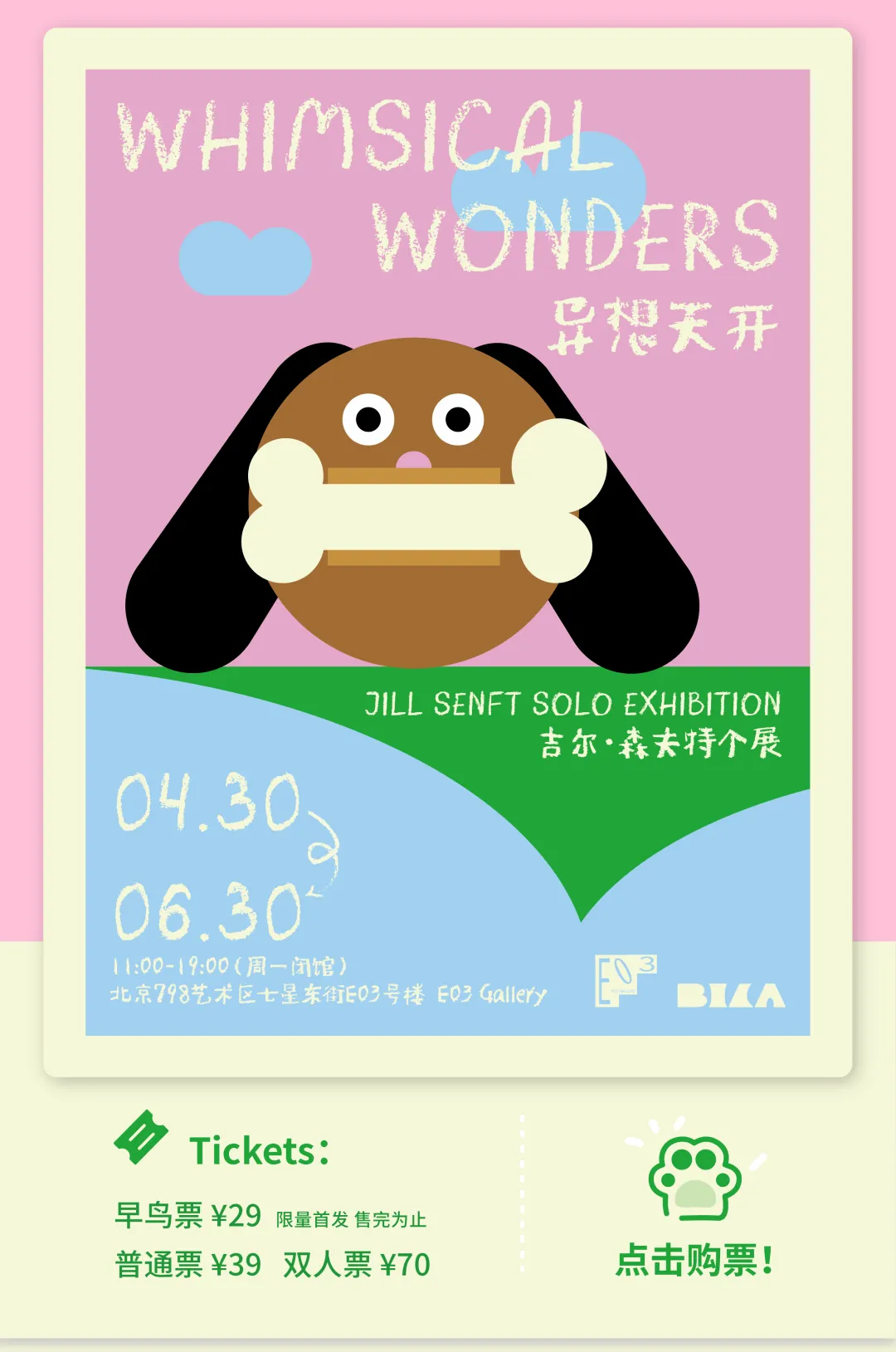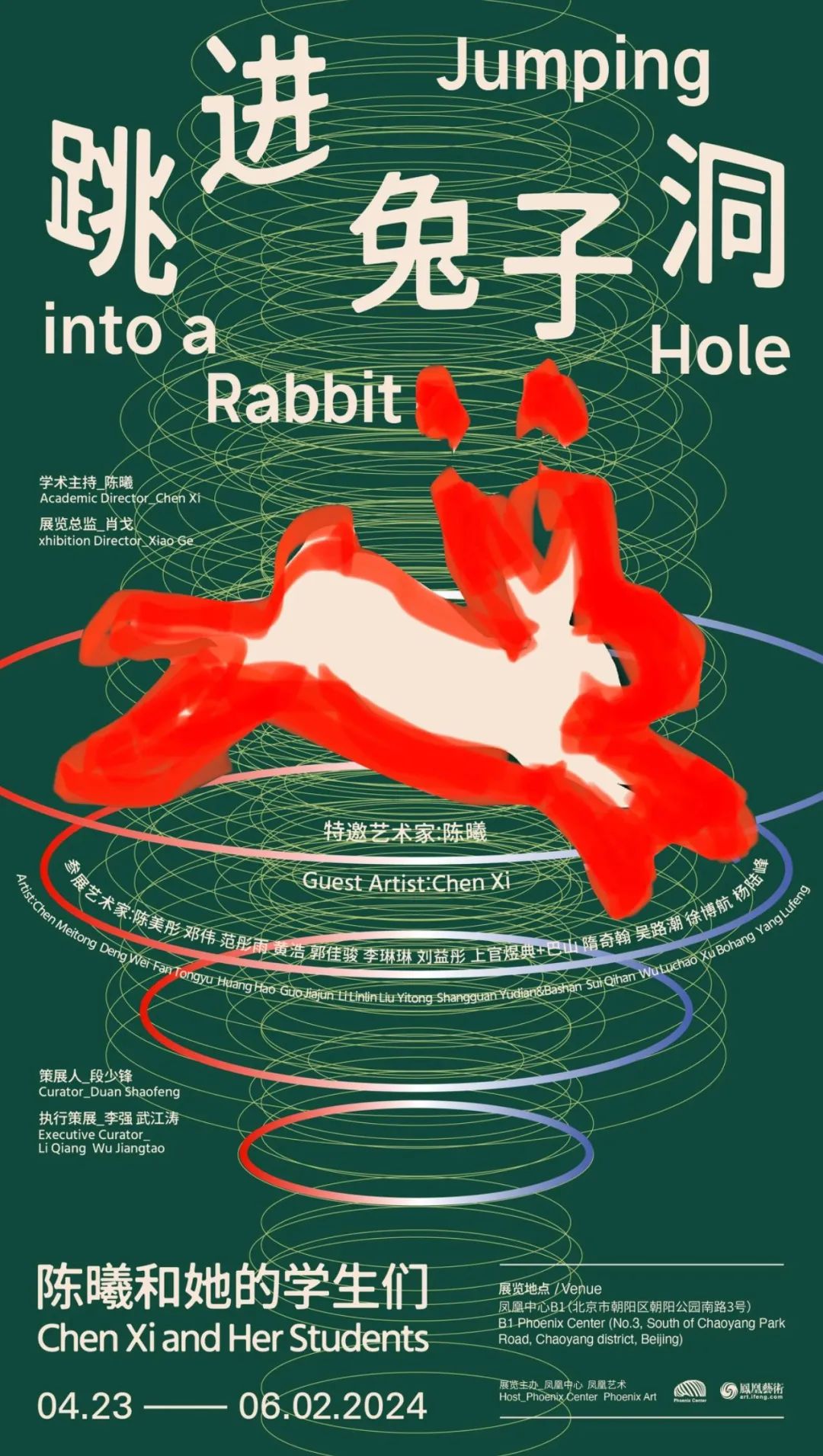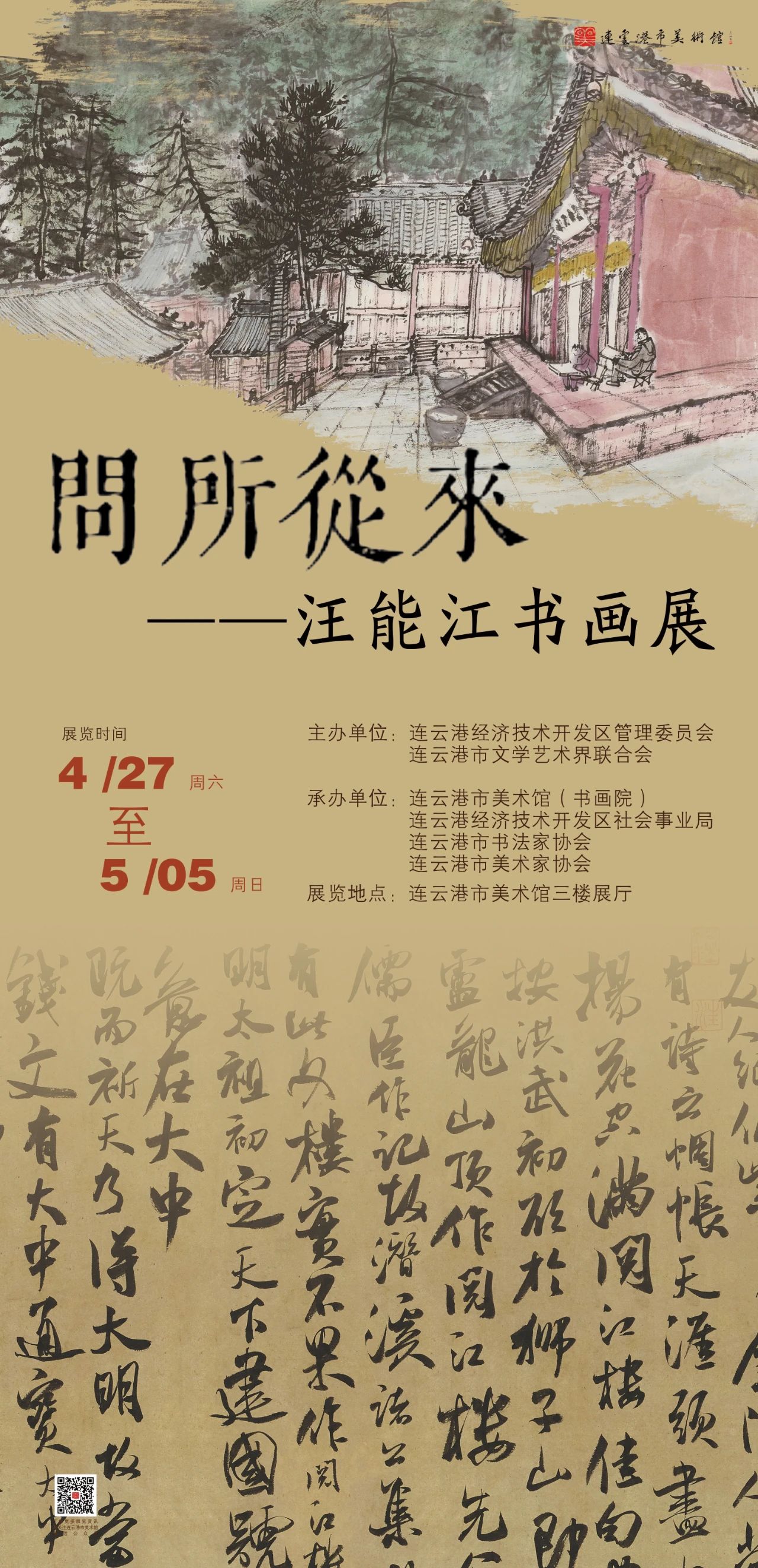
“镀银的夜行者”
Silver-Plated Night Walkers
一
Part 1
看李继开的近作,常常想起《诗经·小星》的诗句:“嘒彼小星,三五在东。肃肃宵征,夙夜在公。寔命不同……”心有所动之余,竟考虑以“小星”做他展览标题的可能。李继开自然没有画过星夜里奔忙的烦怨官吏,在语言感觉与心理氛围等方面,这些出自“我国最早的一部诗歌总集”的词句,与李继开的绘画也鲜有相似之处。让人产生联想的,应该是“嘒彼小星,三五在东”的萧瑟意象、“肃肃宵征”的孤独夜行者、以及“寔命不同”的遗世感(或是“为世所遗”)吧。
When I look at Li Jikai's recent works, I often think of the lines in the poem The Book of Songs: Little Star: "Three or five shimmering little stars were scattered in the east sky. The officials always left for work before dawn, devoted themselves to the government affairs all days and nights. People’s fates are different…" I was moved and also considered the possibility of using "little star" as the exhibition title. Naturally, Li Jikai did not paint the disgruntled officials running around in the starry night. In terms of language and psychological state, these words and phrases from "one of the earliest poetry collections in China" have little resemblance to Li Jikai's paintings. What we can associate with the painting is the desolated image of "the small stars in the east", the lonely night walker, and the feeling of being left behind by the world (or “abandoned by the world”).
倒不是说李继开近来创作的一律都是“夜景”——虽然他的确喜欢塑造那种仿佛笼罩着沉沉夜色的景象——但他笔下那些由流露着被放逐(或自我放逐)的孤寂与落寞的“孩子”和远离人烟、荒凉而又萧瑟的场景构成的“小世界”,都像是夜深人静、万物沉睡之后才幽然显现的梦魇般的世界。如果说《小星》所眷恋白昼正是人们习惯的日常俗世,李继开笔下飘荡着梦魇气息的“异常世界“,显然更近于闪烁着三五颗黯淡的“小星”的、“寔命不同”的黑夜了。而这个世界的“夜行者”,正是那些仿佛在梦游或是被噩梦惊醒的孩子,他们的面孔就像寻常的邻家孩子,但神情举止中——神情愕然、茫然、木然、惨然,或呆立、或枯坐、或独守火堆、或在梦魇中沉睡、或背着满身包袱失魂落魄地行走——却仿佛隐含着与年龄、身份不相符的“万古深愁”。
Not all of Li Jikai's recent works depict "night scenes", although he does like to create scenes that seem to be shrouded in the darkness of night. His "small worlds" are composed of scenes that reveal the loneliness and desolation of being banished (or self-exile), including the lonely "children" and the "desolate and sluggish scenes" far away from human traces. They are like nightmarish worlds that appear only in the midnight when everything has fallen asleep. If the daytime that the Little Star is attached to is the everyday mundane world that people are familiar with, the "abnormal world" under Li Jikai's brush is full of nightmarish atmosphere and is obviously closer to the night of three or five scattered “little stars” and “different fates”. The "night walkers" of this world are more like the children who seem to be sleepwalking or awakened by nightmares. Their faces are like those of ordinary neighborhood children, but their demeanor is stunned, bewildered, dull, and miserable. They are standing still, sitting alone, waiting alone by the fire, sleeping in nightmares, or walking around with a bag full of burdens and the lost mind. All seem to imply the "eternal deep sorrow" that does not match their age and status.
但若真用“小星”做标题的话终究还是觉得颇为牵强,毕竟差异太大,无论怎样的解释,都会是过度的阐释。直到我在李继开的一首诗中看到“镀银的夜行者……一切已经习惯……一千年过去了……”等句子,那种冷峭、孤寂的心境和那种千古绵延的宿命的沧桑意味,又让人自然想起两者令人心动的相似之处,也自然而然地确定了展览的标题——“镀银的夜行者”。
But if "little star" is really used for the title, it might be a bit far-fetched. After all, there is a great difference, and no matter what the explanation is, it will be over interpreted. Until I read the lines from Li Jikai’s poem: "Silver-plated night walkers… get used to everything… A thousand years have passed…", the desolated and lonely state of mind and the vicissitudes of predestined fate that lasted over a thousand years, naturally remind people of the heartwarming similarities between the two expressions. Thus, the title of the exhibition is naturally finalized as "Silver-Plated Nightwalker ".
二
Part II
李继开曾经讲述过一个梦境:“我一个人在黑夜里的平原里行走,荒凉的地平线上慢慢地面对走来一个路人……这个路人竟然有一张自己可以认识的熟悉面孔……这个路人的面孔,一幅小孩模样,且我们各自都是面目不清的疲倦。”在一次访谈中他又补充说:“你碰到的路人肯定不是一个小孩,是一个成人,但你对那个脸的感觉是儿童,是小时候的朋友的脸。”明明感觉对方是成人,但看到的却是一张儿童的面孔,这个在他看来表征了“自我的怀念”的“儿时朋友”,其实像极了他近年来反复塑造的“儿童”。
Li Jikai once recounted a dream: "I was walking alone on the plain in the darkness. A passerby appeared slowly on the desolate horizon… This passerby had a familiar face that I could recognize... a child-like face. We were both tired with unrecognizable appearance." In an interview he added: "The passerby you encountered is certainly not a child, but an adult. The face impressed you as a child’s face, like a childhood friend." You know that it’s an adult but you saw a child’s face, which in his opinion represents the “childhood friend” of the "nostalgia self". Actually, it is like the "children" he has repeatedly portrayed in recent years.
或许是天性使然,早在大学本科阶段,在颇为繁杂的艺术语言实验中,李继开的笔下就自有一种烂漫、璀璨而又粘稠、郁结的少年心性。到2000年,他开始很确定地在“画小孩”。几年后,“画小孩”成为崛起的“70后艺术”的一种重要现象,一批通常被称为“新卡通一代”的年轻艺术家也迅速广为人知。作为这个群体重要的代表人物,李继开私下里却不太认可“新卡通一代”这个标签,他觉得自己只是画“小孩”而已,就像国内外那些比他更年长、更知名的“画小孩”的艺术家一样。也许正是源于这样的自我认知,当这个群体后来承受着年龄与艺术趣味的持续拷问的时候,他却能依然故我地画他的“小孩”。
Perhaps it is because of his nature that early in his undergraduate years, in the midst of a rather complicated experimentation with art language, Li Jikai embodied his brushwork with a rosy, radiant, yet sticky and depressed teenage quality. By the year 2000, he began to "paint children" with certainty. A few years later, "painting children" became an important phenomenon in the rising "post-70s art". A group of young artists, often called the “new cartoon generation”, quickly became well known. As an important representative of this group, Li Jikai personally does not recognize the label of "new cartoon generation". He feels that he paints "children", just like the older and more well-known “children” artists at home and abroad. Perhaps it is because of this self-perception that he was able to continue with his "children" paintings, when this group was later subjected to the constant interrogation about age and artistic interest.
当然,李继开笔下的“小孩”并不是一成不变的。我曾在2015年的一篇文章中将他的“画小孩”大体划分为三个阶段:2000-2004年是定型期。经过几年的衍化,他笔下头角峥嵘的小怪物、花间呕吐的怪童等,最终提炼为有着短发、圆脸的邻家小孩的模样,在小叛逆、小厌世、小伤害的“游戏面具”中自我幽闭的“儿童”;2004-2008年是“儿童”“轻浅的游戏世界”的自然展开:有梦醒时分的厌倦与惊愕,有对生命与死亡的迷思,更多的则是内心的孤独与惘然……种种毫不天真烂漫的儿童情态,勾画出一个个令人心悸的“自我幽闭”的“小世界”;2009-2015年则是“儿童”纠结、挣扎的生长期。一方面,“儿童”常常变得过于巨大的手足、身躯,似乎暗示了一种畸形生长的“青春尴尬”;而另一方面,“儿童”的行为举止越来越有现实的涵义:背包袱、点篝火、拾土豆、在城市废墟中伫立、在孤舟里沉思……成年人的社会体验逐渐取代了幽闭的“少年情怀”。这样简单、机械的线性分析,显然无法全面解析李继开十多年来错综复杂的艺术创作,而是意在揭橥一种不太受人关注的内在演化趋势。
Of course, Li Jikai's "children" are not unchanged. In an article in 2015, I categorized his creation trajectory of “painting children" into three phases. From 2000 to 2004, it was the definitive stage. After a few years of derivation, the little monsters with horns and the strange children vomiting among the flowers under his brush were finally refined into children with short hair and round faces. “Children” in the "game mask" of small rebellion, misanthropy, and harm, were in a self-imposed seclusion. From 2004 to 2008, the “shallow game world” of "children" was unfolded naturally. It had the boredom and shock of waking up from a dream, the myth of life and death, and more than that was the loneliness and confusion of the heart... The childish mood and naive appearance depicted a “small world” of “self-seclusion” which moved people’s heart. The years from 2009 to 2015 marked the hesitating and struggling period of “children”. On the one hand, the often oversized hands, feet, and bodies of "children" seemed to suggest a kind of "youthful embarrassment" of deformed growth. On the other hand, the behavior of "children" had an increasingly realistic implications: backpacking, lighting campfires, collecting potatoes, standing in urban ruins, meditating in lonely boats… The adult’s social experience gradually replaced the claustrophobic "teenage sentiments”. Such a simple, mechanical and linear analysis obviously cannot fully analyze Li Jikai's intricate artistic creations over the past decade or so, but rather it intended to reveal an inner evolutionary trend that had received less attention.
沿着这个角度看,2016年至今的,或许可以称为李继开的“定格期”,前一阶段尴尬、畸形的“生长”业已停滞和重新定型,仿佛在付出艰辛的努力之后,笔下的“小孩”最终还是无法脱变为真正的成年人——就像他梦中所见,即使明明知道是成年人,但看到的却还是一张“儿童”的脸——伴随着这样的“定格”,李继开笔下的人物、景象、以及语言趣味,都悄然发生了不易觉察但却非常深刻的变化:
既然无法忍受成人的面孔,那就让“孩子”承载更复杂深刻的精神体验,于是,那些播种的孩子、背包袱的孩子、篝火边的孩子、帐篷边沉思的孩子、旷野中行走的孩子……的神情、举止,愈益深刻地呈现为一种一个时代无法回避的精神幻象;既然笔下的“小世界”最终无法蜕变为成人俗世的大景观,那就倾心锤炼这个“小世界”的苍凉、凝重的深沉诗意,于是,在那些远离人烟、荒凉而又萧瑟的、仿佛夜深人静之时才幽然浮现的“小世界”中,愈益清晰地感受到历史上那些伟大的“黑夜世界”奇瑰、恢弘而又隽永的深沉诗意。
Following this perspective, the period from 2016 to the present can perhaps be called Li Jikai's "definitive period", in which the awkward and deformed "growth" of the previous stage has come to a halt and has been reshaped, as if the "child" under his brush could not be transformed into a real adult after all the hard work. It is just like what he sees in his dream. Even though he knows it is an adult, he still sees the face of a "child". With this "freeze frame", Li Jikai's characters, scenes, and linguistic interests all undergo an imperceptible but profound change.
Since he can't stand adult faces, he makes "children" carry more complex and profound spiritual experiences, so those children sowing seeds, carrying backpacks, sitting by the campfire, meditating by the tent, walking in the wilderness… look and act more profoundly as a spiritual illusion that the era can’t avoid. Since the "small world" as an artwork could not finally be transformed into a large landscape of the adult’s world, we should focus on hammering the "small world" with a deep poetic implication of bleakness and desolation. So, those "small worlds" which are far away from men’s traces, desolate and sluggish, seem to emerge in the dead night. We can feel more and more clearly the strange, magnificent, timeless and deep poetic meaning of those great "dark worlds" in history.
就语言方式而言,他这几年常用的语言媒介有布面丙烯、素描、陶片等,素描和陶片大都是在率意勾勒的基础上稍作渲染,而布面丙烯的语言风格的则很多样:有些近于经典的表现主义风格,有近于半抽象的涂鸦风格,有些是勾勒为主稍事渲染的书写风格……在所有的形式语言中,却都能感受到痉挛、拗折与快意挥洒,优雅、舒展与苍凉、郁结,阴郁、黯淡与璀璨、高亢的交融与激荡。这独特的语言气质,透露出一种比人物的形象、表情和空间意象更本真的精神体验:与无法撼动的命运般的“真相”面面相觑时的承受、追问、抗争……
In terms of artistic language, his media in the past few years include acrylic on canvas, sketching and ceramic tiles, etc. Sketch and ceramic tile are mostly based on random sketching with slight rendering, while the style of acrylic on canvas is very diverse: some are almost in classical expressionist style. Some are close to semi-abstract graffiti style, and others are sketching-based writing with slight rendering… In all the formal languages, one can feel the interplay of spasms, twists and turns, elegance, easiness, bleakness and depression, gloom, brilliance and exuberance. This unique linguistic quality reveals a spiritual experience that is more genuine than the images and expressions of characters and spatial imagery: the bearing, questioning and struggle when one faces the unshakeable "truth" of fate…
三
Part III
李继开认为自己处身的时代是一个“小时代”。所谓“时代属性”之类的宏大问题向来是见仁见智、难以定论的,中国的社会环境本来就极为复杂,处于不同地位、不同生活圈子的人的时代感觉都会大不相同——这些年来,我听到过种种不同的“某某时代”的说法——不过,想到十几年前“卡通一代”的崛起,想到国内和国际上那些更年长的画“小孩”的知名艺术家,想到前几年艺术界对“小清新”趣味的关注;再联想到几年前那部颇有影响的同名电影,联想到这些年来雨后春笋般涌现的“流量明星”和令人侧目的“流量”,以及近来流行的“内卷”、“躺平”之类的网络词汇…… “小时代”这个说法,大概有很广泛的社会共识吧。
Li Jikai considers his own era to be a "small time". The so-called "attributes of the times" and other grand issues have always been a matter of opinion and are hard to determine. The social environment of China is extremely complex. People in different positions and different life circles will have very different feelings about the times. Over the past years, I have heard a variety of different expressions of “a certain era”. But when I think of the rise of the "cartoon generation" about a decade ago, the older and more internationally known artists who paint "children”, the art world’s interest in the “small fresh style”, I can further associate with the influential movie of the same name a few years ago, the “online celebrities” and the eye-popping “traffic” that have sprung up over the years, and the recent popular internet words such as “involution” and “laid-back”. The term of “small time” may arouse wilder social consensus.
其实,对普通人的普通生活而言,与风云际会、英雄辈出却往往是“国家有倒悬之急,生灵有累卵之危”的大时代相比,常让人愤愤然骂着、又欣欣然享受着的小时代,未必不是一个更好的时代。在这样的时代,如果有人在夜深人静或悠然独处的时候,幽然地作一番精神上的追问,或者幽然地朝自己内心看一看,他一定会意识到李继开的“镀银的夜行者”——那些徒然重复着“无意义”的举动,明明是成年人日渐沧桑的心境却始终脱不掉“儿童”面孔的夜行者——正是这个“小时代”最令人震撼的精神肖像之一。
In fact, for ordinary people’s life, compared with the big time when a country is in a state of emergency, the living is in danger and many heroes come forth, the small time, which people often curse angrily and enjoy life to their content, might be a better time. In such an era, if someone, in the dead of night or when he or she is relaxed and alone, can make a spiritual inquiry or look into the heart, one will surely recognize Li Jikai's "silver-plated night walkers" who repeat "meaningless" acts, or the night walkers who are adults with a growing mentality, yet never lose their "child" faces. They are the most impressive features of this "small time”.
方志凌
Fang Zhiling
2021-6-12

